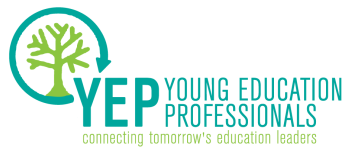

Most American students learn about the landmark 1954 Supreme Court case Brown v. Board of Education. We recall the facts of Brown presented like this: prior to Brown, schools were segregated by race; there were white schools and black schools; there were white water fountains and “colored” water fountains. We learned Brown overturned the Plessy v. Ferguson “separate but equal” doctrine, deeming “separate educational facilities inherently unequal” and segregation illegal.
As a student, Jenna couldn’t imagine a world of separate schools or water fountains. The thought of the handful of black kids in her school using separate bathrooms, standing in separate lunch lines, and working at separate desks was absurd. How could this have ever been okay? Wow, she thought, I’m sure glad to be alive today and not during the 1950s. We have come so far.
Kimberly’s reaction was vastly different. Her father had integrated his middle school as a 12-year-old black boy in Greensboro, North Carolina, after much prayer on the part of his family and a great deal of vitriol from his community. As she looked around her own middle school thirty years later, Kimberly saw a school building where children of different races and classes walked through the same schoolhouse doors but learned in different classes, ate lunch at different lunch tables, and seemed to be disciplined by different policies. When she thought about Brown, she wondered, Is this really what my father fought for?
Despite our different perspectives, neither of us knew the severity and pervasiveness of school segregation today when we learned about Brown. We were taught the decision had taken care of that racist practice. But in reality, the 1950s were not that long ago, and the struggle to achieve the spirit of Brown didn’t end with the banging of a judge’s gavel.
The truth is that school segregation is alive and well today. In fact, we’ve both lived some version of it. Growing up in a predominately white working-class suburb and attending a predominately white public school, Jenna realized later that having only a handful of black peers was an indication of her school’s lack of diversity. And even though Kimberly’s school was slightly more diverse, she remembers feeling isolated in her advanced classes, oftentimes as the only black student.
Significant progress has been made since the Jim Crow era. But to say school segregation ended with Brown because it is no longer legal to separate students by race is misguided.
Nationwide, more than one-third of all black and Latino students attend schools that are more than 90 percent nonwhite, and for white students, those statistics are reversed: more than a third of white students attend schools that are over 90 percent white. Our schools are also stratified by socioeconomic status. The percentage of schools that were both high poverty and 75 to 100 percent Black and Hispanic rose from 9 percent in the 2000-2001 academic year to 16 percent in the 2013-2014 academic year.
The increasing prevalence of “double segregation” (students isolated by both race and class) and “triple segregation” (isolation by race, class, and language) is alarming. We live in a nation where we not only see stark racial and income inequality but also divides on how we talk to and hear one other, empathize with one another, and regard one another through our actions or through the policies for which we advocate.
DC is in no way immune to these patterns. In fact, as the city becomes more racially and economically diverse, it is not leading to diverse learning environments for children. Nearly 71 percent of black public school students in DC go to “apartheid schools” – schools that are either completely non-white or within one percent of absolute segregation. A typical black student attends a school that is over two-thirds low income, whereas white students in DC and the surrounding suburbs typically attend schools that are not only substantially white, but where around 75 percent of their classmates come from middle class or more affluent families.
Diverse schools are more than just a social justice imperative. Desegregation is also a concrete method to improve academic outcomes for marginalized students, begin to remedy past inequities, and bolster our social and economic future. Socioeconomically and racially diverse schools improve student achievement, reduce racial bias, promote critical thinking, and encourage creativity.
The racial achievement gap in K-12 education narrowed more rapidly during the peak years of school desegregation during the 1970s and 1980s than it has during the last 30 years, when desegregation has been deemphasized and replaced by accountability policies. And the gap didn’t narrow under desegregation because white achievement declined, but because minority achievement rose.
This data makes sense given that integration leads to more equitable access to important resources such as structural facilities, highly qualified teachers, challenging courses, and it also elevates rates of parent volunteerism, funding, and social and cultural capital.
We need leaders in education, across the political spectrum, to recognize that school diversity is an important and effective strategy to improve the social, emotional, civic, and academic outcomes of all students. While integration has been long perceived to be a court-mandated, top-down process, many local education agencies and school districts have begun to voluntarily diversify their schools. Beyond that, the millennial generation of young thinkers, advocates, parents, and students increasingly believe that diversity matters.
Our new organization, Learn Together Live Together (LTLT), was founded to seize this moment and organize those leaders. LTLT envisions a world where all children have access to diverse, equitable, and inclusive learning environments that will allow them to flourish academically, socially, and as adults in an increasingly diverse world. Our mission is to educate the public and build political will for voluntary efforts that promote school diversity by fostering and framing conversations, identifying and upholding research-supported best practices, and advocating for a wide-range of policies and programs at the national, state, and local levels.
Our stories – Jenna’s surprise upon discovering the durability of school segregation and Kimberly’s firsthand experience with poorly devised diversity policies – are not unique. However, they don’t have to be perpetuated. Together, we can start a movement that teaches about where we have been, makes clear how far we have to go, and provides a path forward, paved by the next generation of researchers, community members, students, and parents who believe in the promise of school diversity.


 RSS Feed
RSS Feed